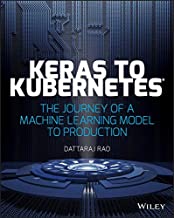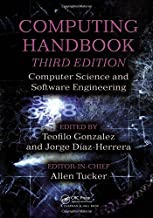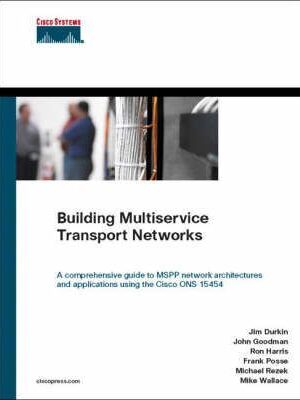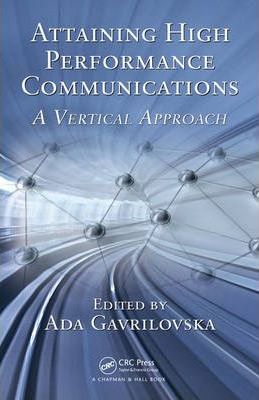Keras to Kubernetes: The Journey of a Machine Learning Model to Production
Original price was: ₹3,084.14.₹2,467.31Current price is: ₹2,467.31.
ISBN: 9781119564836
Author/Editor: Dattaraj Rao
Publisher: John Wiley
Year: 2019
1 in stock (can be backordered)
Description
Build a Keras model to scale and deploy on a Kubernetes cluster
We have seen an exponential growth in the use of Artificial Intelligence (AI) over last few years. AI is becoming the new electricity and is touching every industry from retail to manufacturing to healthcare to entertainment. Within AI, were seeing a particular growth in Machine Learning (ML) and Deep Learning (DL) applications. ML is all about learning relationships from labeled (Supervised) or unlabeled data (Unsupervised). DL has many layers of learning and can extract patterns from unstructured data like images, video, audio, etc.?
Keras to Kubernetes: The Journey of a Machine Learning Model to Production?takes you through real-world examples of building DL models in Keras for recognizing product logos in images and extracting sentiment from text. You will then take that trained model and package it as a web application container before learning how to deploy this model at scale on a Kubernetes cluster. You will understand the different practical steps involved in real-world ML implementations which go beyond the algorithms.
Find hands-on learning examples?
Learn to uses Keras and Kubernetes to deploy Machine Learning models
Discover new ways to collect and manage your image and text data with Machine Learning
Reuse examples as-is to deploy your models
Understand the ML model development lifecycle and deployment to production
If youre ready to learn about one of the most popular DL frameworks and build production applications with it, youve come to the right place!
Additional information
| Weight | 0.424 kg |
|---|
Product Properties
| Year of Publication | 2019 |
|---|---|
| Table of Contents | Introduction xiii Chapter 1 Big Data and Artificial Intelligence 1 Data Is the New Oil and AI Is the New Electricity 1 Rise of the Machines 4 Exponential Growth in Processing 4 A New Breed of Analytics 5 What Makes AI So Special 7 Applications of Artificial Intelligence 8 Building Analytics on Data 12 Types of Analytics: Based on the Application 13 Types of Analytics: Based on Decision Logic 17 Building an Analytics-Driven System 18 Summary 21 Chapter 2 Machine Learning 23 Finding Patterns in Data 23 The Awesome Machine Learning Community 26 Types of Machine Learning Techniques 27 Unsupervised Machine Learning 27 Supervised Machine Learning 29 Reinforcement Learning 31 Solving a Simple Problem 31 Unsupervised Learning 33 Supervised Learning: Linear Regression 37 Gradient Descent Optimization 40 Applying Gradient Descent to Linear Regression 42 Supervised Learning: Classification 43 Analyzing a Bigger Dataset 48 Metrics for Accuracy: Precision and Recall 50 Comparison of Classification Methods 52 Bias vs. Variance: Underfitting vs. Overfitting 57 Reinforcement Learning 62 Model-Based RL 63 Model-Free RL 65 Summary 70 Chapter 3 Handling Unstructured Data 71 Structured vs. Unstructured Data 71 Making Sense of Images 74 Dealing with Videos 89 Handling Textual Data 90 Listening to Sound 104 Summary 108 Chapter 4 Deep Learning Using Keras 111 Handling Unstructured Data 111 Neural Networks 112 Back-Propagation and Gradient Descent 117 Batch vs. Stochastic Gradient Descent 119 Neural Network Architectures 120 Welcome to TensorFlow and Keras 121 Bias vs. Variance: Underfitting vs. Overfitting 126 Summary 129 Chapter 5 Advanced Deep Learning 131 The Rise of Deep Learning Models 131 New Kinds of Network Layers 132 Convolution Layer 133 Pooling Layer 135 Dropout Layer 135 Batch Normalization Layer 135 Building a Deep Network for Classifying Fashion Images 136 CNN Architectures and Hyper-Parameters 143 Making Predictions Using a Pretrained VGG Model 145 Data Augmentation and Transfer Learning 149 A Real Classification Problem: Pepsi vs. Coke 150 Recurrent Neural Networks 160 Summary 166 Chapter 6 Cutting-Edge Deep Learning Projects 169 Neural Style Transfer 169 Generating Images Using AI 180 Credit Card Fraud Detection with Autoencoders 188 Summary 198 Chapter 7 AI in the Modern Software World 199 A Quick Look at Modern Software Needs 200 How AI Fits into Modern Software Development 202 Simple to Fancy Web Applications 203 The Rise of Cloud Computing 205 Containers and CaaS 209 Microservices Architecture with Containers 212 Kubernetes: A CaaS Solution for Infrastructure Concerns 214 Summary 221 Chapter 8 Deploying AI Models as Microservices 223 Building a Simple Microservice with Docker and Kubernetes 223 Adding AI Smarts to Your App 228 Packaging the App as a Container 233 Pushing a Docker Image to a Repository 238 Deploying the App on Kubernetes as a Microservice 238 Summary 240 Chapter 9 Machine Learning Development Lifecycle 243 Machine Learning Model Lifecycle 244 Step 1: Define the Problem, Establish the Ground Truth 245 Step 2: Collect, Cleanse, and Prepare the Data 246 Step 3: Build and Train the Model 248 Step 4: Validate the Model, Tune the Hyper-Parameters 251 Step 5: Deploy to Production 252 Feedback and Model Updates 253 Deployment on Edge Devices 254 Summary 264 Chapter 10 A Platform for Machine Learning 265 Machine Learning Platform Concerns 265 Data Acquisition 267 Data Cleansing 270 Analytics User Interface 271 Model Development 275 Training at Scale 277 Hyper-Parameter Tuning 277 Automated Deployment 279 Logging and Monitoring 286 Putting the ML Platform Together 287 Summary 288 A Final Word . . . 288 Appendix A References 289 |
| Author | Dattaraj Rao |
| ISBN/ISSN | 9781119564836 |
| Binding | Paperback |
| Edition | 1 |
| Publisher | John Wiley |
You must be logged in to post a review.






Reviews
There are no reviews yet.